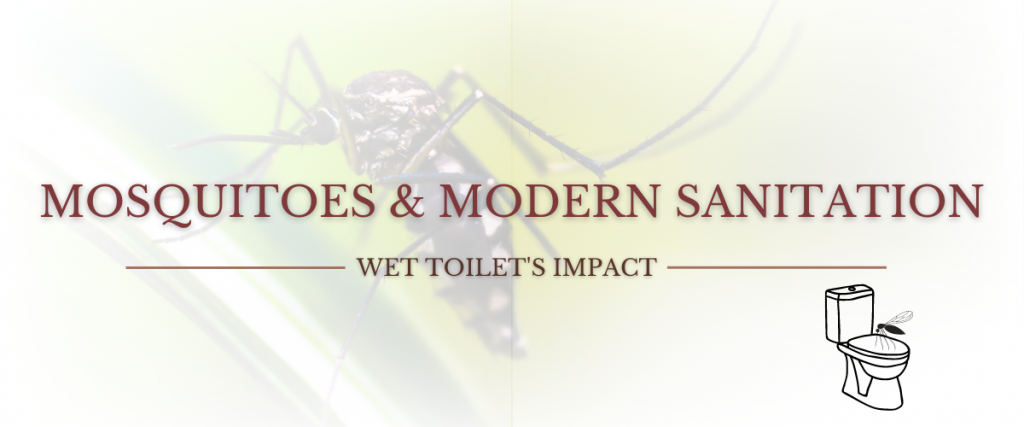How wet toilets become the breeding ground for Mosquitoes
When we visited out village in Uttarpradesh during our summer holidays, back in the 1970’s and 80’s, hygiene was putting cow dung all over the house floor! Dust and dirt were different. Dust was an integral part of life while dirt was used for the plants.
As the industrial revolution progressed, dust became dirt and there were harmful germs everywhere- at least that’s what the advertisements claimed! And my mom started using phenyl to disinfect the house, mosquito coil to keep the mosquitoes out. I got used to a constant blocked nose and closed windows for fear of mosquitoes.
When I came to our village, Nagarkoodal in 1992 I was surprised that there were no mosquitoes. We could actually sleep all night with out a mosquito coil, or fan in the open. I began to wonder as to how this place was devoid of mosquitoes and flies. As we started living here we built a soak pit for the toilet and lo and behold both flies and mosquitoes began to live with us.
I was haunted by the experience of mosquito free sleep. I began to study the life cycles of both flies and mosquitoes. I realized that flies need rotting cow dung while mosquitoes flourish in the soak pit. I found that the mosquitoes came out of the soak pit gaps in the cover. I tried many ways of sealing the gaps. But every time somehow or the other they found a way to go back in.
When we started the school, the toilet became a huge drain for the limited water. We needed to conserve every drop and the flush toilet was too much of a luxury for our limited water. I began to look for alternative types of toilets. I came across the concept of composting toilets.
We built our first composting toilet using dry leaves and plain soil as the means to cover the night soil. Initially it was a strange thing to hear the thud of the stuff as it fell into the pit. We had some reservations about the pathogens that are supposed to be in the night soil. As we got better informed, we realized that the soil has microbes which feed on the night soil and ensures that the stuff is completely digested and converted into nutrients that the plants can absorb easily.
So our problem of soil fertility was solved! We wouldn’t have to transport compost from other farms. Not only that, as we began to use the composting toilet and stopped using the wet one, the mosquitoes vanished! There were no more mosquitoes except the tree mosquitoes in the evenings. We didn’t have to use any chemicals to disinfect our toilets as the soil itself was full of healthy microbes. Inside the pit we put ash and lime once a week to ensure that the flies do not lay eggs.
Today at Puvidham we have very few mosquitoes that get blown in the wind from the neighbour’s septic tank! On our campus there are no mosquitoes and very few flies because we have understood that water needs to be reused for the plants and toilets are best when they are composting toilets. We have no use for harpic or lizol or any other disinfectant. We have realized that in the name of hygiene we were polluting our environment and facilitating the lifecycle of carriers like flies and mosquitoes!




Thank you very much for this information. It’s only your immense experience that has led you to find a solution to the mosquito problem .Also leading to benefits such as manure for the farm .